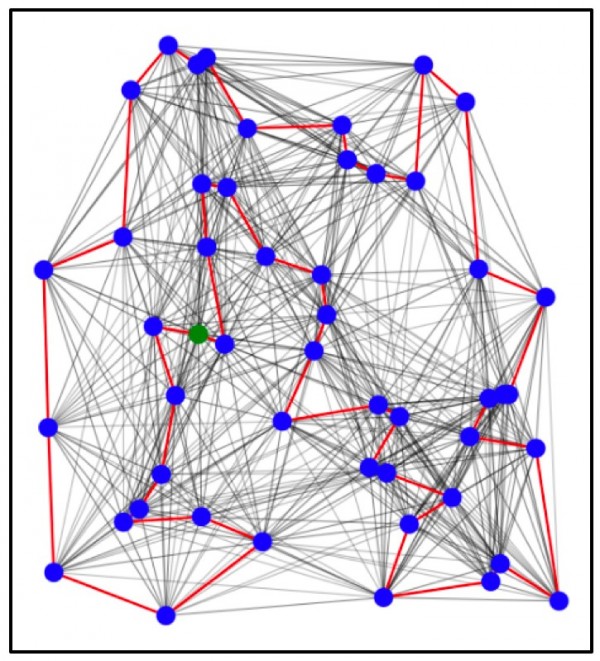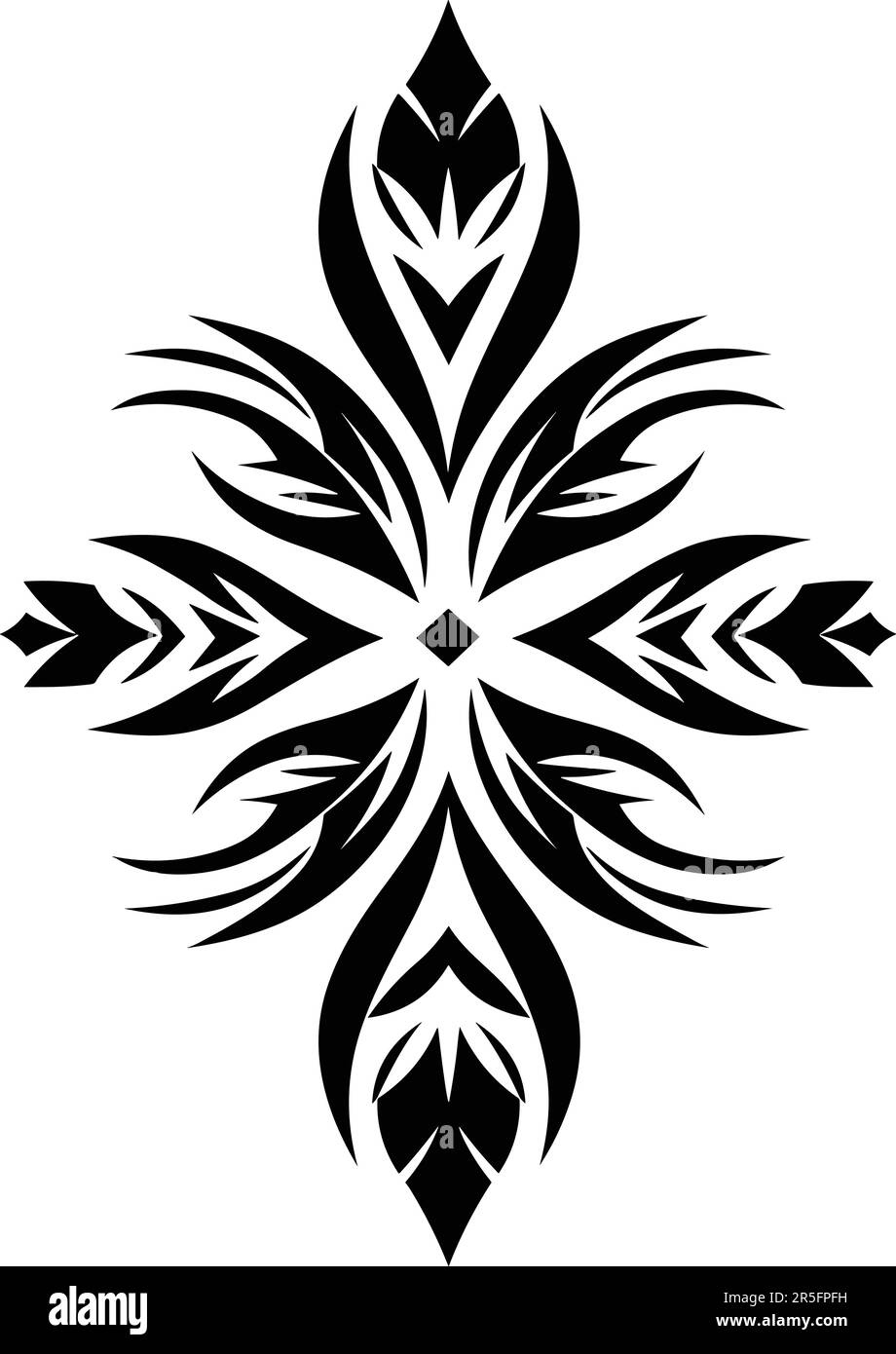Tattoo designs have evolved significantly over the years, with various styles and techniques emerging to cater to the diverse tastes and preferences of individuals seeking body art. One of the oldest and most iconic styles in the tattoo world is tribal art, which has a rich history and continues to captivate modern tattoo enthusiasts. In this comprehensive article, we will delve into the captivating realm of tribal tattoos, exploring their origins, unique characteristics, and enduring appeal.
The Origins of Tribal Tattoos

To truly appreciate the allure of tribal tattoos, we must first journey back to their ancient roots. Tribal tattoos have a profound historical significance, dating back thousands of years to various indigenous cultures worldwide. These tattoos were an integral part of the cultural and spiritual practices of ancient tribes, serving as powerful symbols of identity, status, and spiritual beliefs.
One of the earliest recorded instances of tribal tattoos can be traced back to the Maori people of New Zealand. The intricate facial tattoos known as moko were not merely decorative but held deep cultural and social meanings. Each moko design was unique, reflecting the wearer's genealogy, social status, and personal achievements. These tattoos were a source of pride and a way to honor one's heritage.
Similarly, the indigenous tribes of North America, such as the Haida and the Tlingit, adorned their bodies with intricate tribal tattoos. These tattoos often depicted animals, spirits, and natural elements, representing the connection between the individual and the natural world. The designs were carefully crafted to convey stories and communicate the wearer's personal journey and cultural identity.
In ancient Polynesian cultures, tattooing, known as tatau, was a sacred art form. Polynesian tribal tattoos, characterized by bold, black geometric patterns, were believed to bestow protection and ward off evil spirits. The process of receiving a tatau was a significant rite of passage, marking important life events and signifying one's place within the community.
The Modern Revival of Tribal Tattoos

While tribal tattoos have ancient origins, their popularity experienced a significant resurgence in the late 20th century, particularly in the 1990s. This revival can be attributed to a growing fascination with indigenous cultures and a desire to connect with one’s roots. As people sought to express their individuality and embrace their heritage, tribal tattoos became a powerful means of self-expression and cultural appreciation.
Modern tribal tattoos draw inspiration from a wide range of indigenous cultures, including Maori, Polynesian, Native American, African, and Celtic traditions. Artists and enthusiasts have combined elements from these diverse cultures to create unique and contemporary tribal designs. This fusion of ancient aesthetics with modern techniques has given rise to a vibrant and diverse tribal tattoo scene.
Tribal tattoos often feature bold, black lines and intricate geometric patterns. The designs are typically devoid of shading or color, focusing instead on the interplay of lines and shapes. This simplicity of style allows tribal tattoos to be highly versatile, adapting to various body parts and personal preferences.
Symbolism and Meaning in Tribal Tattoos
Tribal tattoos are more than just visually striking body art; they carry deep symbolic meanings. Each design element within a tribal tattoo holds significance, representing various aspects of the wearer’s life, beliefs, and aspirations. Understanding the symbolism behind tribal tattoos adds a layer of depth and personal connection to these ancient art forms.
Animal Motifs
Animals play a prominent role in tribal tattoos, with each creature symbolizing specific traits and virtues. For example, the eagle, a revered bird in many indigenous cultures, often represents freedom, strength, and spiritual connection. The wolf, known for its pack mentality, may signify loyalty, family, and community bonds. Other popular animal motifs include the bear, representing power and protection, and the snake, symbolizing transformation and rebirth.
| Animal | Symbolism |
|---|---|
| Eagle | Freedom, strength, spiritual connection |
| Wolf | Loyalty, family, community |
| Bear | Power, protection |
| Snake | Transformation, rebirth |

Geometric Patterns
Geometric patterns are a defining feature of tribal tattoos, adding visual interest and symbolic depth to the designs. These patterns often represent the interconnectedness of all things and the cycles of life. Circles, spirals, and triangles are common geometric elements, each with its own unique symbolism.
Circles, for instance, can symbolize eternity, unity, and the cycles of life. Spirals may represent growth, evolution, and the journey of self-discovery. Triangles, with their three points, can convey concepts such as balance, strength, and the trinity of mind, body, and spirit.
Cultural Influences
Tribal tattoos often incorporate specific cultural elements, paying homage to the indigenous cultures that inspired them. Maori-inspired tattoos, for example, may feature the iconic koru spiral, symbolizing new beginnings and growth. Polynesian tattoos might include the tiki figure, representing protection and spiritual guidance.
Design Considerations for Tribal Tattoos
When considering a tribal tattoo, there are several important factors to keep in mind to ensure a satisfying and meaningful result. Here are some key considerations to guide your tribal tattoo journey:
Choosing the Right Artist
Finding a skilled and experienced tattoo artist who specializes in tribal designs is crucial. Look for artists who have a deep understanding of the cultural significance and aesthetic principles of tribal tattoos. Their expertise will ensure that your tattoo is not only visually appealing but also respectful of the cultural heritage it represents.
Size and Placement
Tribal tattoos can be versatile in terms of size and placement. Smaller, more delicate tribal designs can be placed on the wrist, ankle, or behind the ear, making them subtle yet powerful statements. Larger, more intricate tribal tattoos are often showcased on the arm, leg, or back, allowing for greater detail and impact.
Personalization and Meaning
One of the most appealing aspects of tribal tattoos is their ability to be personalized to reflect your unique story and identity. Discuss with your artist the symbols and motifs that hold personal significance to you. Whether it’s a beloved animal, a spiritual symbol, or a representation of your cultural heritage, incorporating these elements into your tribal tattoo will make it truly yours.
Color and Shading
While traditional tribal tattoos are typically black and void of shading, modern interpretations often incorporate color and shading techniques. Adding color can enhance the visual impact of your tattoo and allow for a more detailed and nuanced design. However, it’s essential to strike a balance, as excessive color or shading may detract from the tribal aesthetic.
The Art of Tribal Tattooing: Techniques and Styles

Tribal tattoos encompass a range of techniques and styles, each offering its own distinct appeal. Here’s a glimpse into some of the popular approaches to tribal tattooing:
Hand-Poked Tattoos
Hand-poked, or hand-tapped, tattoos are a traditional method that involves manually inserting ink into the skin using a handheld tool. This technique, often associated with indigenous tattooing practices, creates fine, precise lines and is well-suited for intricate tribal designs. The process is slower and more labor-intensive but results in exquisite, detailed tattoos.
Machine-Pushed Tattoos
In modern tattoo studios, machine-pushed tattoos are the most common approach. Tattoo artists use electric tattoo machines to deposit ink into the skin. This method allows for greater speed and precision, making it ideal for larger, more intricate tribal designs. Machine-pushed tattoos offer a wider range of line thicknesses and can accommodate shading and color more easily.
Blackwork and Dotwork
Blackwork and dotwork techniques are often employed in tribal tattoos to create depth and texture. Blackwork involves the use of solid black ink to create bold, graphic designs, while dotwork utilizes a series of tiny dots to build up intricate patterns. These techniques can be combined with geometric tribal elements to create stunning, visually captivating tattoos.
The Impact of Tribal Tattoos: Beyond Aesthetics
Tribal tattoos extend far beyond the realm of aesthetics, carrying deep cultural and personal significance. For many individuals, tribal tattoos serve as a powerful means of connecting with their heritage, celebrating their cultural identity, and honoring their ancestors. These tattoos become a tangible expression of one’s roots and a source of pride and self-discovery.
Additionally, tribal tattoos can have a profound impact on the individual's sense of self and personal growth. The process of researching, designing, and receiving a tribal tattoo often involves a journey of self-reflection and exploration. It encourages individuals to delve into their cultural heritage, learn about the symbolism and meanings behind tribal designs, and forge a deeper connection with their own identity.
Moreover, tribal tattoos can foster a sense of community and shared identity. People with tribal tattoos often find themselves part of a unique and vibrant community, united by their appreciation for this ancient art form. It serves as a visual language, allowing individuals to connect and bond over their shared passion for tribal tattoos and the rich cultural heritage they represent.
Conclusion: Embracing the Ancient Art of Tribal Tattoos
Tribal tattoos are a testament to the enduring power of ancient art forms and their ability to resonate with modern individuals seeking meaningful self-expression. From their ancient origins in indigenous cultures to their modern revival, tribal tattoos have captivated the hearts and imaginations of tattoo enthusiasts worldwide.
Whether you're drawn to the bold, geometric patterns of Polynesian tattoos, the intricate symbolism of Maori designs, or the spiritual connection of Native American tattoos, tribal art offers a rich tapestry of cultural heritage and personal meaning. By embracing the ancient art of tribal tattoos, you embark on a journey of self-discovery, cultural appreciation, and the celebration of our shared human history.
What is the difference between traditional and modern tribal tattoos?
+Traditional tribal tattoos often adhere strictly to the cultural and aesthetic principles of the indigenous cultures they originate from. They typically feature bold, black lines and geometric patterns without shading or color. Modern tribal tattoos, on the other hand, may incorporate elements from various tribal traditions, blend cultural influences, and experiment with shading, color, and contemporary techniques.
Are tribal tattoos suitable for all skin types and body parts?
+Tribal tattoos can be adapted to suit various skin tones and body parts. The bold, black lines and geometric patterns of tribal designs often make them versatile and suitable for different skin types. However, it’s important to consult with your tattoo artist to ensure the design and placement are appropriate for your specific skin and body.
Can tribal tattoos be combined with other tattoo styles?
+Absolutely! Tribal tattoos can be beautifully combined with other tattoo styles to create unique and personalized designs. For example, a tribal sleeve tattoo can incorporate elements of realism, blackwork, or even watercolor techniques to create a visually stunning and eclectic piece.